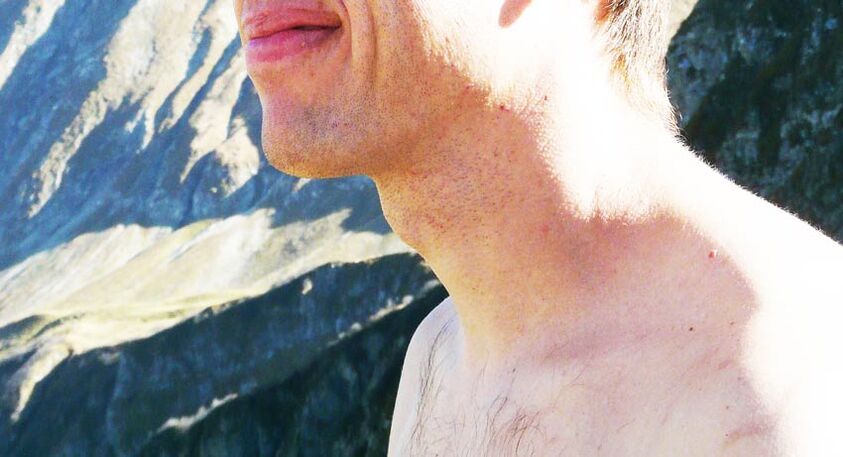
The cervical spine osteochondria is well known and well thought out.At present, most of the working population is suffering from this disease.This type of osteochondrication develops not only in the adult population, but quite often in adolescents, the so -called youth osteochondria.
The part of the cervix is the most mobile part of the spine, so the load in this section is quite large.The disease is gradually developing, characterized by frequent exacerbations, which can lead to a significant reduction in the quality of the patient's life.
The causes of the disease
The causes of the disease, as a rule, are enough and can depend on the patient's age.We emphasize the most common:
- Violation of the calcium-phosphorus exchange of any reasons.
- Various traumatic damage to the back.
- Unbalanced load on the spine (hypotherapy or vice versa the effect of enhanced load).
- diseases of the cardiovascular system.
- Congenital malformations of the spine.
- Change of attitude, including a scolo -type.
- Traffic disorders, leading to deterioration of the power of the intervertebral disc.
- Age -offshore dystrophic violations of bone tissue.
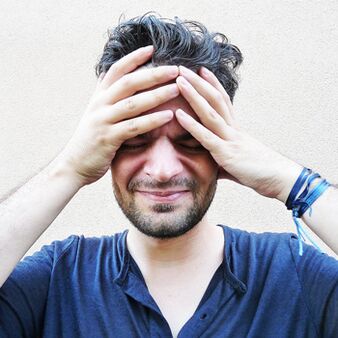
In adolescence, the main causes of disease growth are trauma, not balanced physical activity (training process).In elderly patients, the main reason is a long -standing position during labor activity, a violation of the hormonal background.
Additional predisposing factors to the development of the disease can be:
- heredity;
- hypothermia.
- Badly or not fully elaborated deterioration of osteochondicism.
- Stress situations and excessive work.
Osteochondria is gradually developing.A person who constantly plays sports may not guess what is subject to this disease.
Above all, this situation is found in people over twenty -five years old.The cervical spine osteochondria is characterized by the fact that the process is developed by the upper sections.However, if you do not receive medical care, the procedure may gradually affect the lower parts of the spine.
Symptoms of cervical spine osteochondicity in adults and children
Since the disease has been developing for years, in many cases the process is asymptomatic.It sometimes happens that, according to radiological images, the initial signs of the disease can be determined, while complaints will be actively absent.We must remember that the greater the patient, the more different complaints they will present.
The main complaints with cervical osteochondria are:
- Frequent headache and dizziness.
- numbness in the hands and weakness in the hands.
- Vegetable manifestations;
- increase in blood pressure;
- Discomfort for throat movements.
- Continuous pain or burning pain along the spine.
- Frequent muscle muscles of the throat.
- changes in posture;
- restrictions on head movements.
- In addition, a forced position of the head can be developed.
- noise in the ears.
- Dependence on weather conditions;
- Throat hiding while performing movements.
- Sleep violation.
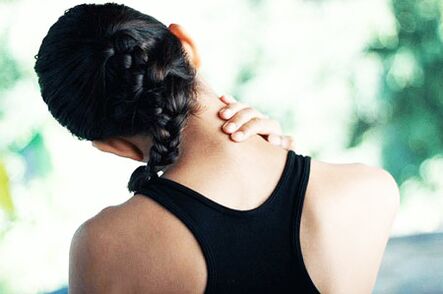
These are the most commonly expressed symptoms that the patient may experience.Unfortunately, the process may start to develop from youth and teenagers will present such complaints.
Most often these symptoms occur together.The cervical spine bone progresses with the episodes of frenzy and recession.This is due to the effect of provocative factors on the body.We must not forget that if a similar diagnosis is made, rehabilitation and recovery therapy must be performed every six months to avoid an acute period.
Given that the main reason for the development of the disease is reduced by the food of the intervertebral disc and the lack of adequate treatment, the process can end in the formation of the intervertebral hernia.
Complaints and clinical picture of the disease - photo
Vascular manifestations in the form of dizziness or headaches are intensified when performing elementary engine (slope or head).In the total of all complaints, the patient is trying to get an additional position to reduce the symptoms, which exacerbates the diet of the intervertebral disc.
These complaints encourage the patient to see a doctor.If you are not cured, the complaints will intensify and have a more persistent nature, that is, they will not go alone.
Pain with cervical osteochondria, as a rule, stable, pain, burning character.The disease may be accompanied by "bastards" magazines, which are caused by sharp movements.
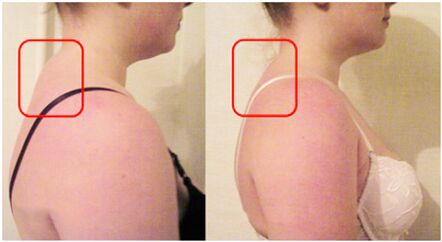
Increasing blood pressure on the background of osteochondicism encourages the patient to be examined by the therapist.If you do not do the competent treatment in a timely manner, the increase in blood pressure will become stable, which contributes to the development of secondary hypertension.In these cases, a proper assembled history is of great importance.
When the procedure is located in the cervical area, the unpleasant sensations spread to the back surface of the neck, the constant voltage of the bone muscle system helps to reduce the movement and the formation of a compulsory head position.
Pain with cervical osteochondria is accompanied by impaired sensitivity.Due to constant discomfort, the muscle cylinder is gradually formed on the shoulder, the patient is unpleasant in this area.
In addition to constant discomfort, the patient may experience a sharp pain in the throat.The appearance of such complaints suggests that the patient must give complete rest to reduce pain.In some cases, the pain is so severe that a person cannot perform the simplest actions (turn his head, take a deep breath, straighten his back).In all cases, the patient should examine the physician and confirm the diagnosis of osteochondry.
Changing the hormonal background also plays an important role in the development of cervical disease.Therefore, satisfied physical activity will reduce the general clinical symptoms and relieve the patient's condition.Due to the fact that neck pain is constantly concerned, a secondary sleep disorder occurs.It is difficult for a person to take a convenient place in bed, concerns that leads to psycho-emotional stress.
In addition, the patient pays attention to sensitivity.Describe them as "gooseberries" that are noticeable on the fingers.In some cases, the unpleasant sensations can be detected all over the hand, muscle strength decreases.
Diagnosis of the disease
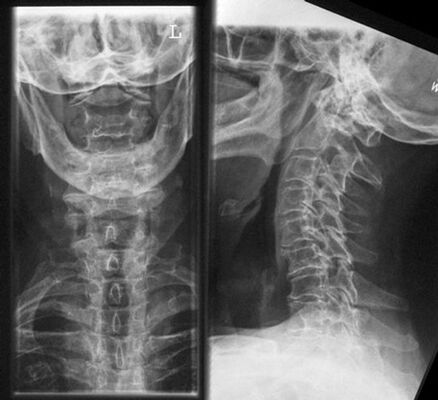
It is quite difficult to diagnose a test based.Basically, the following measures are taken to clarify the diagnosis:
- thorough collection of complaints;
- Consultations of specialized specialists (cardiologist, endocrinologist, neurologist).
- X -Exercise of the cervical spine.
- Magnetic resonance imaging.
Inspections of specialized doctors are necessary to rule out the acute situations of the cardiological profile and others.With the exclusion of acute physical pathology, we can talk about the diagnosis of osteochondicism.In addition to general clinical manifestations, the diagnosis can be confirmed using a spine X -ray.
The X -Ray is the most affordable and easily ongoing study that helps to create a diagnosis.In the picture you can see the stenosis of the space between the vertebrae, which indicates the dystrophy of the intervertebral disc.Along the edges of the vertebrae, bone explosion can be distinguished.If the osteochondria is complicated by instability in the cervical area, then the x -ray can be noted by the displacement of the vertebrae in relation to each other.
The cervical spine osteochondria is a disease that can show radiologically which area is most damaged.Even when looking at a portion of the cervix, one can see that the process is not uniformly common.
In particularly complicated cases, magnetic resonance imaging is performed, which helps to diagnose the complication of osteochondrialization-paranoid hernia.Thanks to the layer -by -layer image of magnetic resonance imaging, even the smallest hernia and immediately indicates the level of damage.
Treatment of cervical spine osteochondry

Only one doctor knows how to cure cervical osteochondria in an acute and intermediate period.The treatment, which is prescribed for this condition, must be complex.In the worsening of the disease, it includes:
- drugs;
- Complex recovery therapy (physiotherapy exercises, gymnastics, massage, acupuncture, manual treatment).
- Physiotherapy (electrophoresis, UHF, magnetotherapy, laser treatment).
In order to avoid deterioration of osteochondicism, they resort to:
- treatment with a sanatorium;
- Popular medicine?
- wearing special bandages and corsets.
- Change lifestyle (weight loss, balanced physical activity).
The medicines for the treatment of cervical spine osteochondicity are:
- Anti -inflammatory drugs.
- drugs that improve blood circulation;
- Vitamin complexes.
- in acute analgesics situations.
- Means that it reduces muscle voltage.
In addition to pills and injections, creams, ointments and gels are actively prescribed, which apply to the affected area.By their influence, they contribute to the irritation of the skin in a particular area, which improves blood circulation in small vessels, thereby ensuring nutrients to damaged sections and the muscle voltage decreases.

After an acute period, physiotherapy, massage and physiotherapy exercises are signed.Restoration treatment is an addition to the main treatment with drugs.As the situation improves, the power and the trio of the intervertebral disc will also be better.
In the context of treatment, the patient will improve well -being, increased performance and mood.If the treatment has stopped without ending, then the exacerbations of osteochondry will often pass.
Recovery will say how to cure cervical osteochondria during the recovery period.Before talking about a restoration complex, it should be noted that any treatment should be accompanied by a sleep accessory correction.These include orthopedic layers and pillows.
In addition, experts also recommend wearing a Chanstz collar constantly or for a certain period of time.This method is particularly widely used in children's practice when patients dress it up for the period of work.The Shanz collar is selected individually in orthopedic lounges.
The cervical orthopedic pillow has been selected for each patient.It should be suitable for the size of the bed and selected according to the patient's constitution.It should not be too small or too large, the main guideline is the width of the person's shoulders.
A pillow for high sleep and rest must be of medium stiffness and resemble a square or rectangle in shape.The different shape pillows are suitable for short rest.Depending on the activity of the degenerative process, the cervical orthopedic pillow must change.
Exercises and Gymnastics (Exercise Therapy)

Restoration treatment should be attributed to the gym.The main task of the exercises is to enhance the muscles of the throat and back, the upper shoulder zone, the improvement of spine mobility and the elimination of muscle clamps.In addition, exercises for cervical osteochondria affect their muscles deeply.
As a result of gymnastics with cervical osteochondria, normal turns are gradually restored and the load on intervertebral discs is reduced.We must not forget that exercises for cervical osteochondria should also be captured by breast parts.
Gymnastics for cervical osteochondria is performed with a trainer.It helps patients understand which areas they should focus on.The load and volume of work are selected individually and depends:
- from the age of the patient.
- by the prevalence of the process.
- by the availability of additional concomitant diseases.
- By the effectiveness of pharmaceutical treatment.
First, simple and non -complex tasks are performed, as the body begins to adapt to new conditions and the muscles perform its work in sufficient volume, the exercises are complex and the duration of the classes increases.
LFK for cervical osteochondria includes simple actions.They turn their head forward and backwards, gradually add circular head movements.It should be borne in mind that even for medical physical treatment can be contraindications.As a rule, the complex of a course includes tasks aimed at developing and impacting all parts of the spine.
After exercises in the cervical area, they add gradual tasks to improve the work of breasts and lumbar.The physical treatment of the media for cervical osteochondria can be performed in a position or sitting position.The tasks are carried out at a short pace, this will allow the addition of respiratory exercise.
Contraindications to physiotherapy exercises:
- Acute pain syndrome.
- increasing blood pressure and the presence of heart pathology in the acute phase.
- violations of coordination and the disease of the vestibular device;
- fever;
- deterioration of another chronic pathology.
- Condition after surgical treatment.
Exercises in special equipment
This technique is based on a gradual restoration of the normal activity of the muscle system.Gymnastics exercises performed in a specialized simulator allow you to gradually restore the work of cervical spine structures.
First, the pain is relieved, and then blood circulation is restored, the muscle voltage is removed and the classes are performed to extend the motor activity to the cervical area.The method is further supported by massage lessons, pool classes.
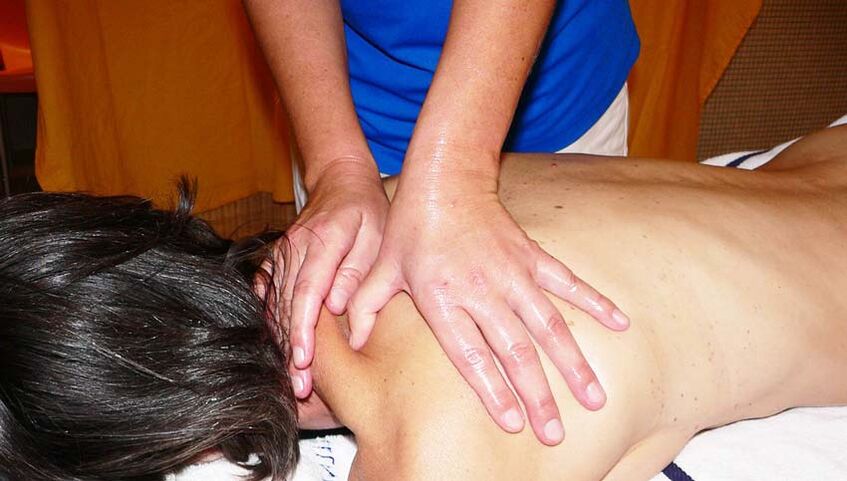
Massage for cervical spine osteochondria
In addition to the general reinforcement classes, a very good result gives a massage.Massage for cervical osteochondria can be used from different (classic, part, point).In some cases a combination of various techniques are allowed in one session.
We must not forget that the cervical osteochondria massage is held on a compact surface, the face down and its duration can vary from ten or more sessions.The frequency of the course repetition is also determined by the doctor.The effectiveness of the massage will last longer if the patient sleeps on a pillow well.
Physiotherapeutic processes as a magnet or electrophoresis have a local irritating effect.Magnetotherapy is a painless process that is well tolerated by adults and children.The manipulation takes several minutes, the patient should be stationary, so older patients are more commonly recommended.
Electrophoresis is a manipulation done using a special device.During the procedure, the patient feels a slight stinging, which is created using currents.The frequency and impulsivity of the signal for each age is his own. With the help of this technique, the introduction of a drug is introduced, which has a positive effect.This handling is more aggressive than magnetotherapy, therefore, there should be strict evidence for its application.
With the help of this technique, the introduction of a drug is introduced, which has a positive effect.This handling is more aggressive than magnetotherapy, therefore, there should be strict evidence for its application.
A balanced diet is of great importance in this disease.Patients are recommended to eat fruits, vegetables, meat, green, fish.Consuming salt and all kinds of spices, spices, smoked or fried products, sugar should be limited.It is best to drink plant decoction and teas, it is advisable to avoid using coffee and alcohol.
The use of traditional medicine aims to reduce pain.Most of the time compressions and mixtures are used, which are overwhelmed in the area of damage.Success in the treatment of cervical spine osteochondry depends largely on the patient's consciousness.Do not throw lessons and treatment as soon as you felt better.It is absurd to constantly use painkillers that bring temporary relief and the disease itself is not treated.



























